The Eric Rathborne fonds at the City of Richmond Archives consists mainly of black and white photographs of aviation activities at the newly opened Vancouver Airport on Sea Island, taken ca. 1935 to 1960.
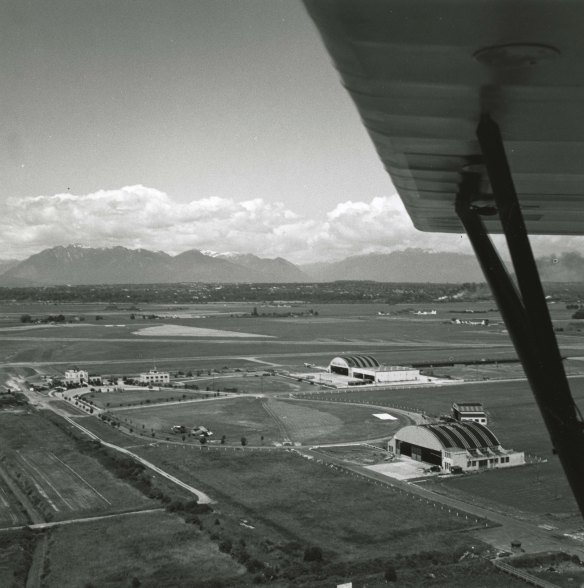 This aerial view of Vancouver Airport shows the hangars, administration building and radio building, ca. 1939. City of Richmond Archives photograph 1997 5 5.
This aerial view of Vancouver Airport shows the hangars, administration building and radio building, ca. 1939. City of Richmond Archives photograph 1997 5 5.Donald Eric Dalby Rathborne was born in England on December 18, 1907. He had his first ride in an airplane in 1924 which sparked a lifelong passion for aviation. He, with his family, emigrated to Windsor Ontario in 1926 when he was 18 years old. In 1930 Mr. Rathborne moved to Victoria in 1930 and then to Vancouver in 1933.
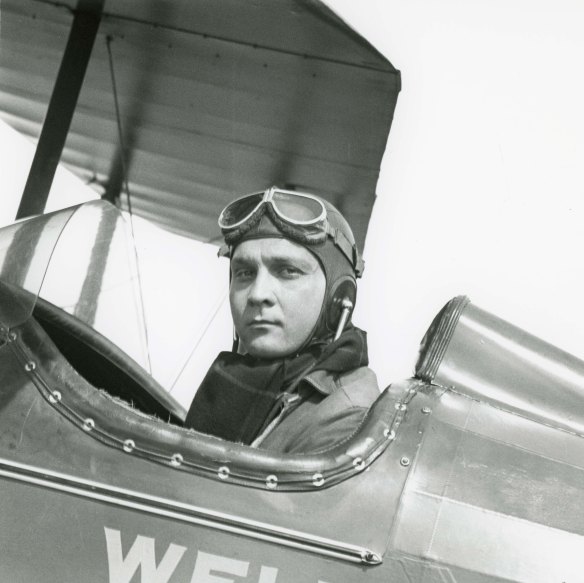 Eric Rathborne sits in the cockpit of an open biplane, ca. 1936. City of Richmond Archives photograph 1997 5 107.
Eric Rathborne sits in the cockpit of an open biplane, ca. 1936. City of Richmond Archives photograph 1997 5 107.
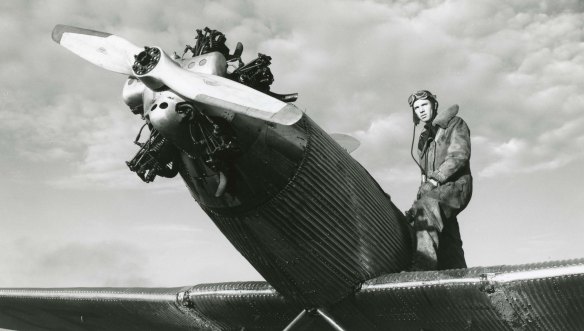 An unidentified aviator wearing a sheepskin flying suit poses on the wing of an aircraft, possibly a Junkers A50, ca. 1936. City of Richmond Archives photograph 1997 5 68.
An unidentified aviator wearing a sheepskin flying suit poses on the wing of an aircraft, possibly a Junkers A50, ca. 1936. City of Richmond Archives photograph 1997 5 68.In his spare time Eric did odd jobs around the Vancouver Airport in exchange for flying lessons, achieving his private pilot’s license in 1936. In 1939 he took a full time job as a maintenance man with Trans Canada Airlines, the precursor of Air Canada, his duties including loading food, oxygen and mail onto aircraft, refueling and engine servicing.
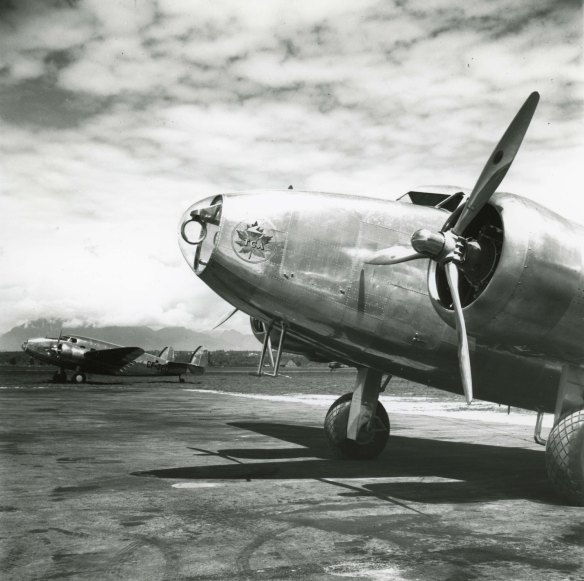 Two Trans Canada Airlines Lockheed 14H-2 aircraft rest on the tarmac at Vancouver Airport. City of Richmond Archives photograph 1997 5 33.
Two Trans Canada Airlines Lockheed 14H-2 aircraft rest on the tarmac at Vancouver Airport. City of Richmond Archives photograph 1997 5 33.
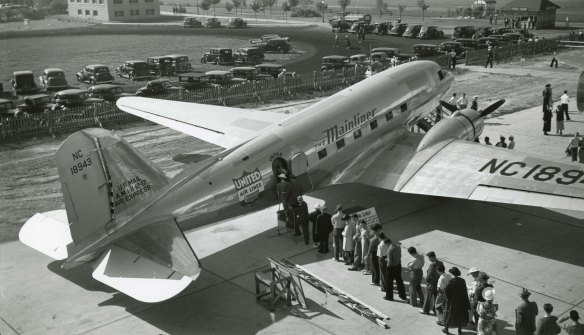 The public lines up to see the interior of the United Airlines “Mainliner” Douglas DC-3, on display at Vancouver Airport at the time of the introduction of this type of aircraft into commercial service, ca. 1938. City of Richmond Archives photograph 1997 5 19.
The public lines up to see the interior of the United Airlines “Mainliner” Douglas DC-3, on display at Vancouver Airport at the time of the introduction of this type of aircraft into commercial service, ca. 1938. City of Richmond Archives photograph 1997 5 19.In May 1941 he earned his commercial pilot’s license and then joined the British Commonwealth Air Training Plan as a staff pilot. The BCATP was the organization responsible for training thousands of Commonwealth pilots and air crew during the Second World War.
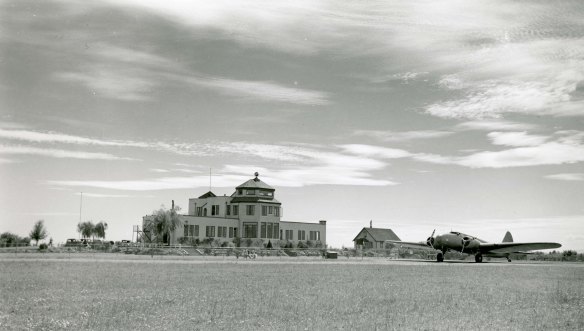 A United Airlines Boeing 247D airliner sits in front of the Vancouver Airport terminal and administrative building in this photo, ca. 1936. City of Richmond Archives photograph 1997 5 26.
A United Airlines Boeing 247D airliner sits in front of the Vancouver Airport terminal and administrative building in this photo, ca. 1936. City of Richmond Archives photograph 1997 5 26.
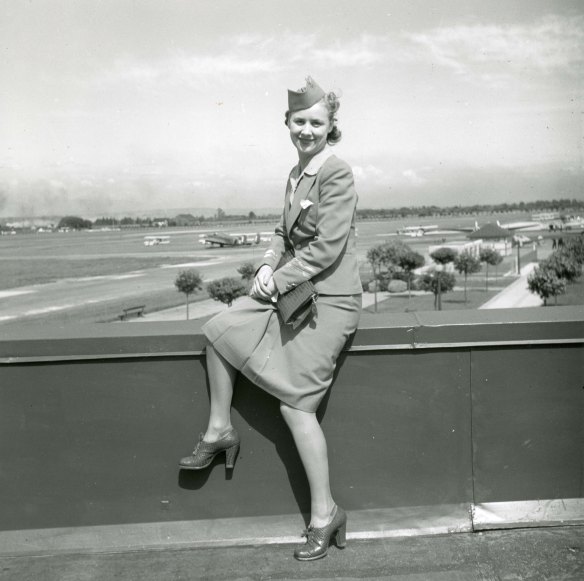 Ruth Alm poses on the observation deck at the Vancouver Airport in the flight attendant’s uniform of Trans Canada Airlines, ca. 1939. The airfield is in the background. City of Richmond Archives photograph 1997 5 38.
Ruth Alm poses on the observation deck at the Vancouver Airport in the flight attendant’s uniform of Trans Canada Airlines, ca. 1939. The airfield is in the background. City of Richmond Archives photograph 1997 5 38.
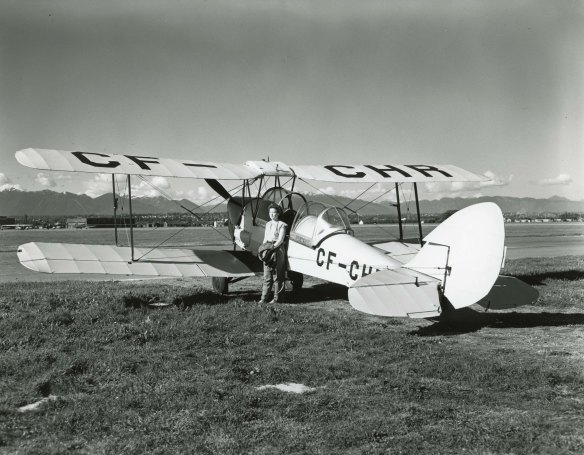 WWII aircraft mechanic, pilot and career flight attendant Ruth Johnson poses beside the Aero Club of BC’s De Havilland Tiger Moth DH82c at the Vancouver Airport, ca. 1946. City of Richmond Archives photograph 1997 5 82.
WWII aircraft mechanic, pilot and career flight attendant Ruth Johnson poses beside the Aero Club of BC’s De Havilland Tiger Moth DH82c at the Vancouver Airport, ca. 1946. City of Richmond Archives photograph 1997 5 82.After his wartime service Mr. Rathborne was, at 37 years old, deemed too old to work as a commercial airline pilot, so he flew as a private pilot and worked occasionally as a pilot for local airlines while making his living as a commercial photographer for over 30 years.
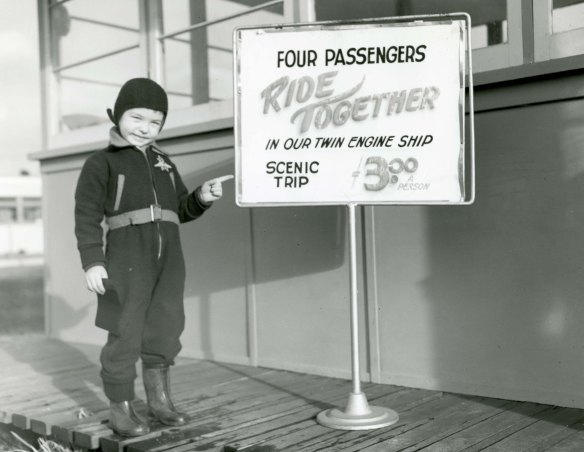 A young Don Rathborne points to a sign for Brisbane Flying Shcool Air Tours in this photo ca. 1949. Nearly 30 years later he saw an airport themed display put on by the City of Richmond Archives at Lansdowne Mall and contacted the Archives to see if they were interested in copying his father’s collection. These images and the rest of the collection will now be preserved, illustrating Vancouver Airport during the Golden Age of Flight and the post War years. City of Richmond Archives photograph 1997 5 93.
A young Don Rathborne points to a sign for Brisbane Flying Shcool Air Tours in this photo ca. 1949. Nearly 30 years later he saw an airport themed display put on by the City of Richmond Archives at Lansdowne Mall and contacted the Archives to see if they were interested in copying his father’s collection. These images and the rest of the collection will now be preserved, illustrating Vancouver Airport during the Golden Age of Flight and the post War years. City of Richmond Archives photograph 1997 5 93.That Rathborne made his living as a commercial photographer is evident in the quality and composition of the photographs he has left documenting the early years of Vancouver Airport on Sea Island. Eric Rathborne died on November 30, 1990 at the age of 82.
The full collection of photographs from the Eric Rathborne fonds can be viewed at: https://bit.ly/2HvXxdb
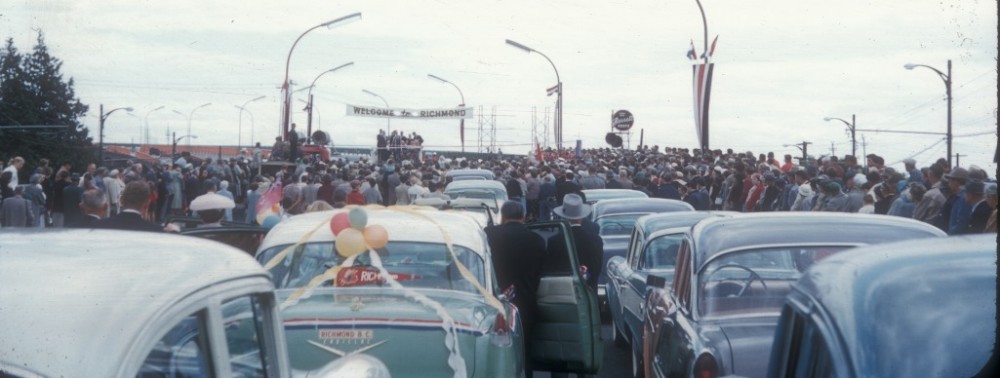
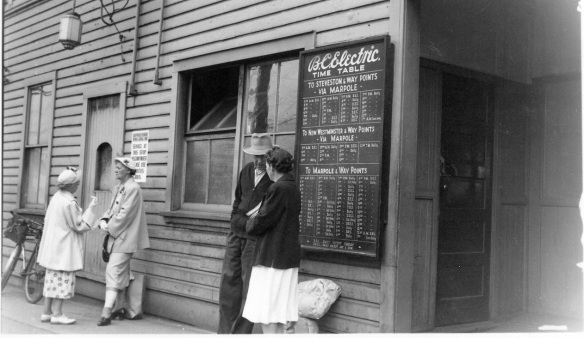
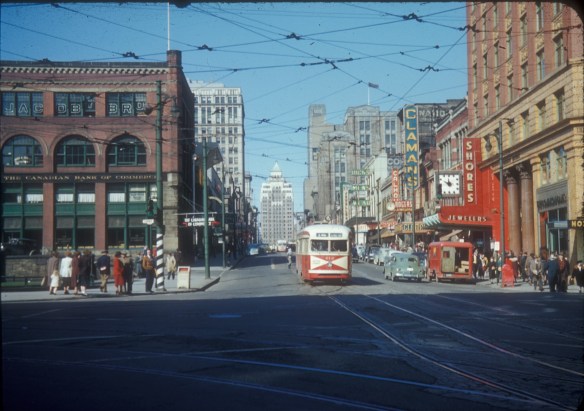
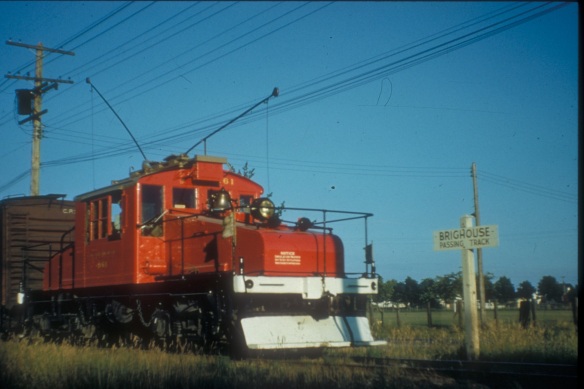
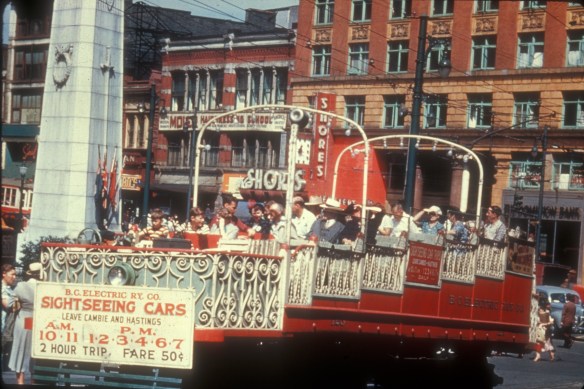
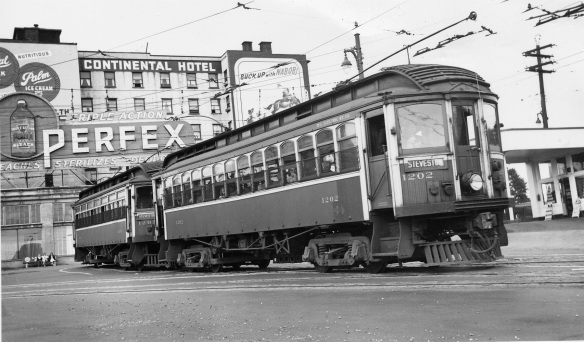
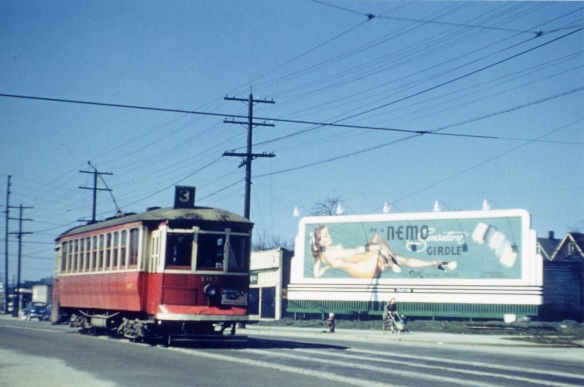
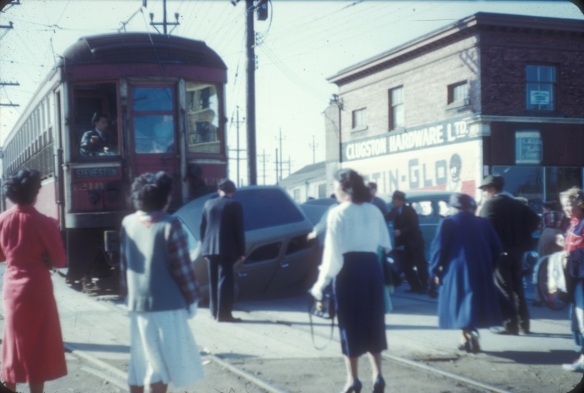
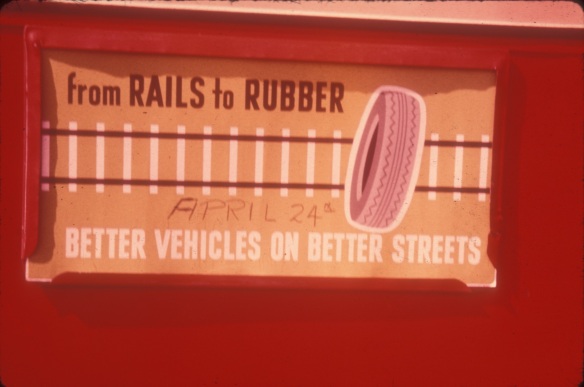
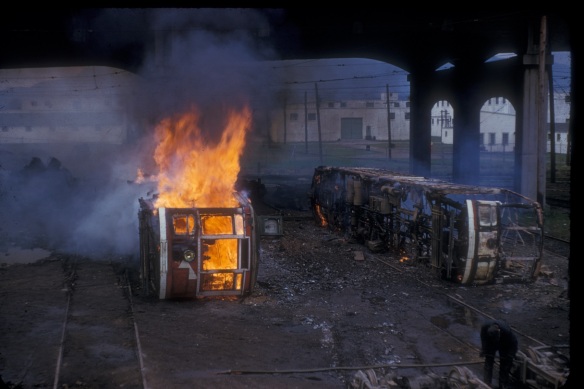
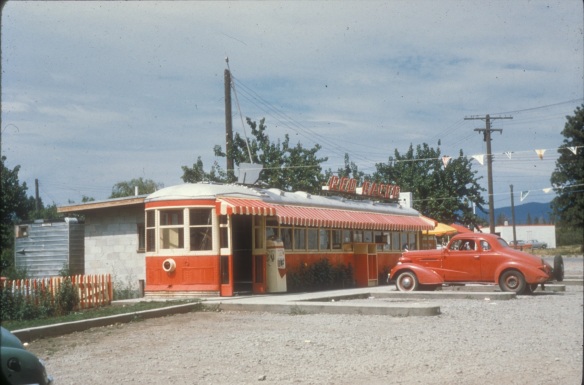
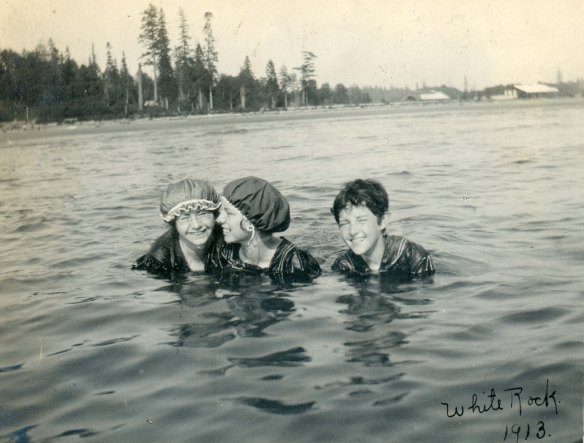
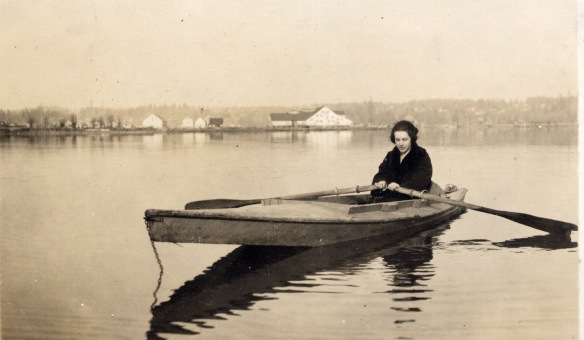
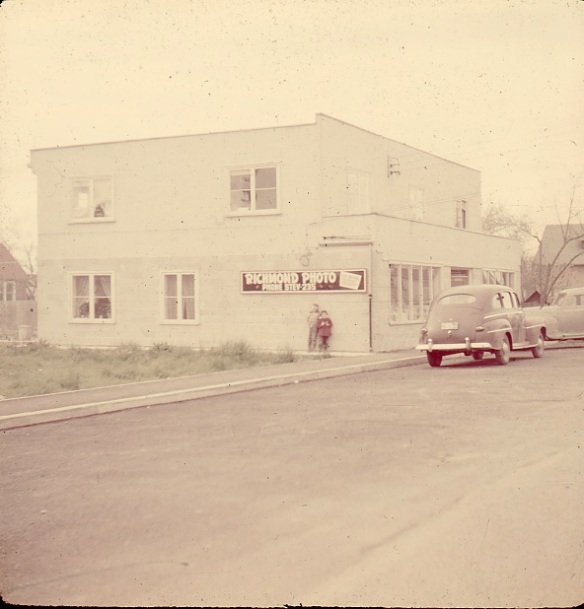
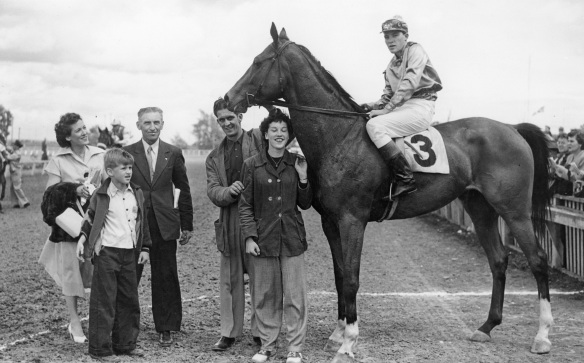
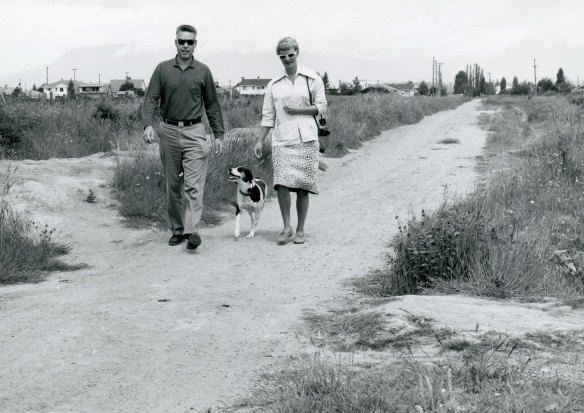
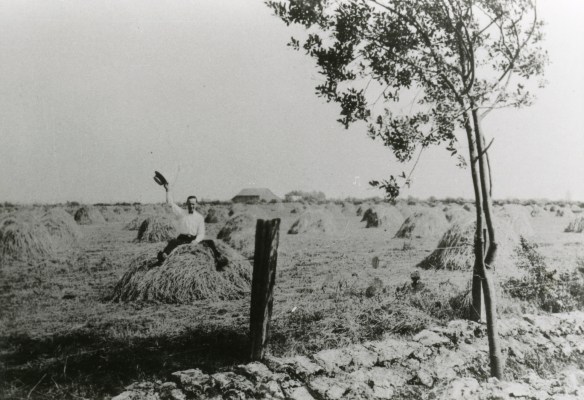
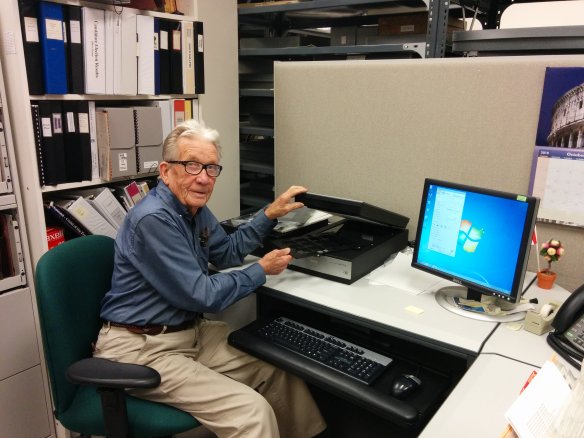
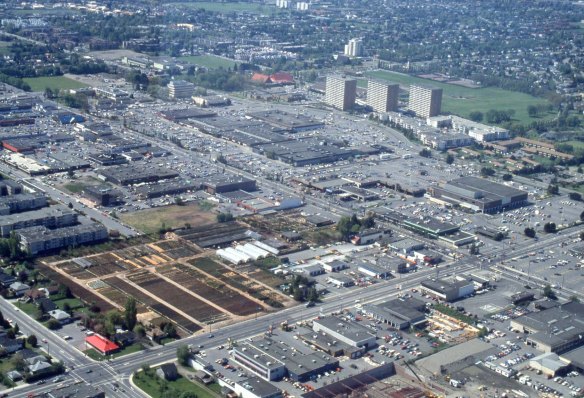
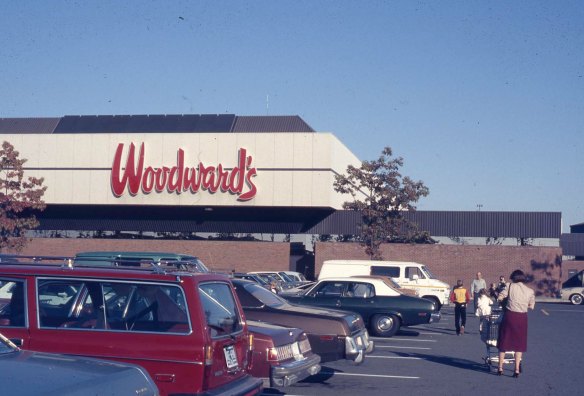
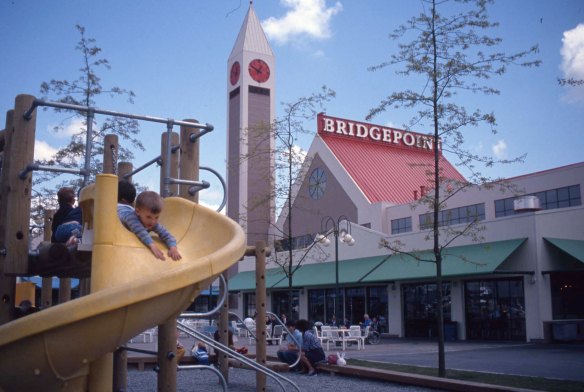
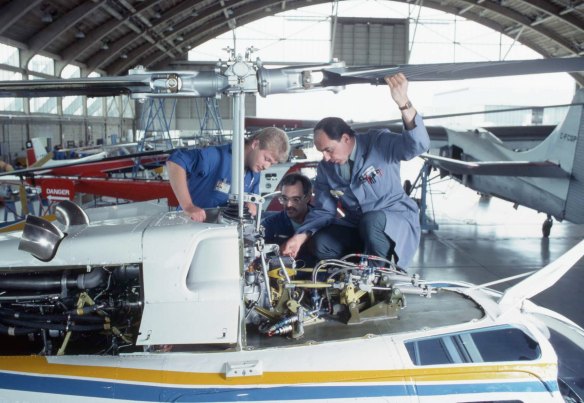
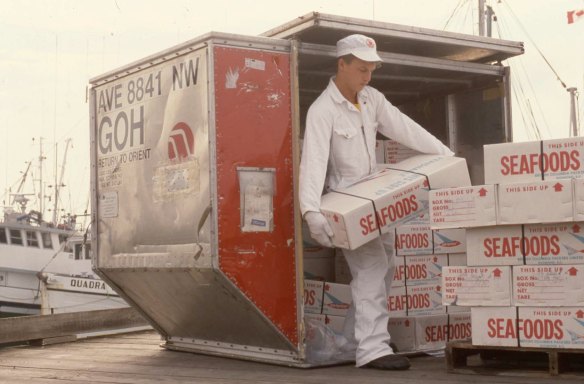




You must be logged in to post a comment.